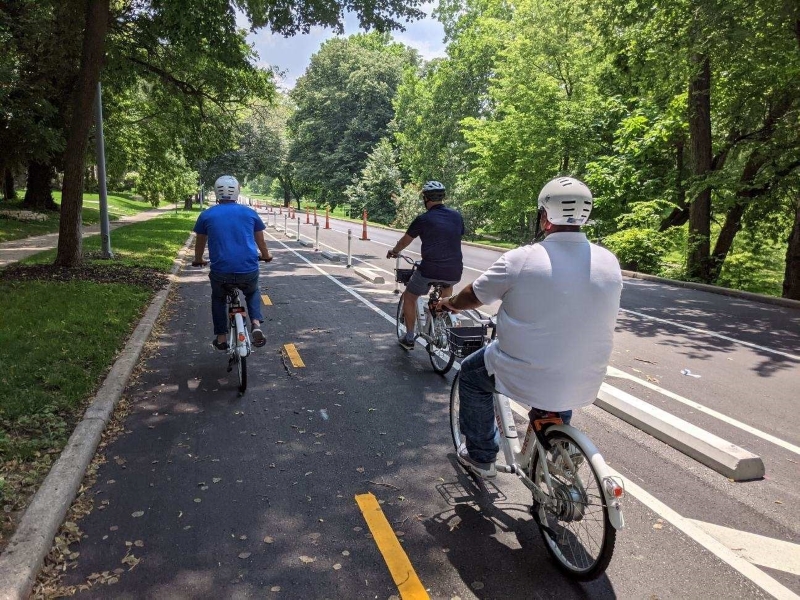Do people use the protected bike lanes in midtown? The evidence is in.
A new report found that protected bike lanes in Kansas City make a big difference in getting more people out of cars.
The report surveyed users and studied usage for the Gillham Road Cycle Track.
What is the Gillham Road Cycle Track?
In 2020, the City of Kansas City, MO began the Gillham Road Complete Streets project to calm traffic and create a protected bike lane. Known as a cycle track, the two-way bike lane is physically separated from street traffic with barriers. It runs along Gillham Road from midtown to the Crossroads. The protected cycle track is the first of its kind in Kansas City.
Data from several cities in the United States show that protected bike lanes see better results over conventional bike lanes when it comes to increasing safety and bike usage.
Gillham Complete Streets Report
Local organization BikeWalkKC conducted the Gillham Complete Streets Report, a comprehensive study collecting qualitative and quantitative data.
Traffic observation cameras collected ridership data and volunteers collected observational data. Volunteers also conducted 338 rider surveys in 2022.
The key findings include:
- It’s more than bikes. People use the cycle track to walk, run, and to use assistive mobility.
- 80% feel safer with the protection from cars
- 73% go out of their way to use it
- 68% would have driven a car without it
- 63% were not traveling on Gillham before it
- While walking and biking account for 1.8% of typical city-wide commuting, along the busiest intersection (Armour Boulevard) of the track, walking and biking account for 6% of the overall mode of commuting along Gillham Road.
- On weekdays, up to 1,087 people walk and up to 215 people bike on Gillham at the busiest intersection (Armour Boulevard). On weekends, 733 people walk and 355 people bike at the busiest intersection.
What are riders saying?
Surveys conducted of riders along the cycle track included the following comments:
“Before the cycle track, I was terrified. Once they put this in I bike to work. I wish there were more trails like this around the city.”
“I even ride it with my kids! Would never have done that without the physical protection from cars.”
“I use the cycle track to get to and from work so I go a little out of the way to get there just to use it.”
Areas for Improvement
The findings also identified areas for improvement from its observational findings and rider surveys. The findings highlighted that driver behavior was the biggest challenge including parking in the cycle track, not yielding to bikers/walkers who had the right of way, running red lights, and ignoring “no right on red” signs.
Other issues and ideas for improvement included the need for better maintenance along the trail to remove debris, raised crosswalks to improve pedestrian safety, and improved infrastructure such as driver awareness signage and pedestrian signals.
The report stressed the need for governments to invest in data collection and analysis to evaluate the outcomes of new investments with evidence-based research.
To learn more about the findings and read the full report, visit bikewalkkc.org.
Top photo: Courtesy of the City of Kansas City, MO
